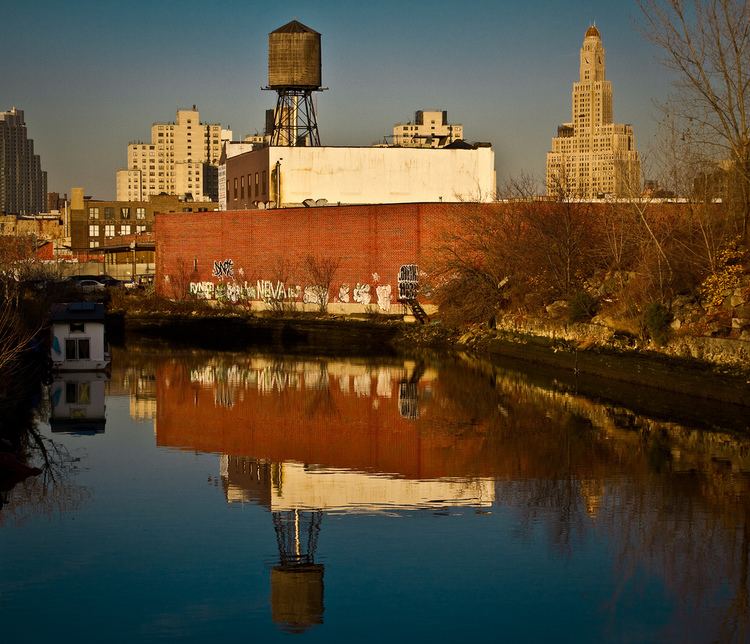 | ||
Restaurants Freek's Mill, Threes Brewing, Lavender Lake Bar, Insa Korean BBQ, Pig Beach Hotels Hotel Le Bleu, La Quinta Inn & Suites Br, Fairfield Inn & Suites By, Union Hotel - An Ascend H, Red Lion Inn & Suites Br | ||
Gowanus (/ɡəˈwɑːnəs/ gə-WAH-nəs) is a neighborhood in the New York City borough of Brooklyn, within the South Brooklyn area. The neighborhood is part of Brooklyn Community Board 6. Gowanus is bounded by Wyckoff Street on the north, Fourth Avenue on the east, the Gowanus Expressway to the south, and Smith and Hoyt Streets to the west.
Contents
Map of Gowanus, Brooklyn, NY, USA
History
In 1636, Gowanus Bay was the site of the first settlement by Dutch farmers in what is now Brooklyn. The ponds of Gowanus meadowlands served to drive gristmills of early settlers. During the American Revolutionary War Gowanus was the scene of fighting in the Battle of Long Island. After the Gowanus Canal was built through Gowanus, the area became an industrial center, and the draining of the ponds began in the 1860s. Since then, the area has been a center of industrial and shipping activity. After World War II, the decline of shipping at the port of Red Hook and of manufacturing around New York City prompted large industry to leave and changed the vibrancy of industry in Gowanus.
Today
The area is zoned for light to mid-level manufacturing (M1, M2, and M3). Recently, residential developers have been hindered by the industrial zoning and the problems of the sewage overflow through the canal water, but there have been rumors of rezoning by the New York City Department of City Planning.
However, the water and much of the land along the banks of the Gowanus Canal have been severely polluted by combined sewer outflows (CSOs) along the canal designed to relieve sewage and storm water when the sewer treatment plant is overwhelmed, as well as by decades of industrial use and extensive coal gas manufacturing during the late 19th century. The Gowanus Canal was also an alleged Mafia dumping ground. Even so, in the early 1980s, alongside the canal, an old 19th-century munitions factory at 230 3rd Street in Gowanus became the site of the massive Gowanus Memorial Artyard, whose remains are still visible.
Because of millennials and freelancers' jobs, "coworking" spaces were formed in Gowanus in the 2010s. More restaurants, bars, and art galleries moved to the neighborhood, and new real estate became available.
On the New York City Subway, the D N R trains on the BMT Fourth Avenue Line and the F G trains on the IND Culver Line run through Gowanus. Bike routes cross the canal on the Union Street, 3rd Street and 9th Street bridges. The elevated Gowanus Expressway runs through the southern edge of the neighborhood, crossing the canal at Hamilton Avenue. The Carroll Street Bridge, built in 1889, is the oldest of the four remaining retractable bridges in the country.
